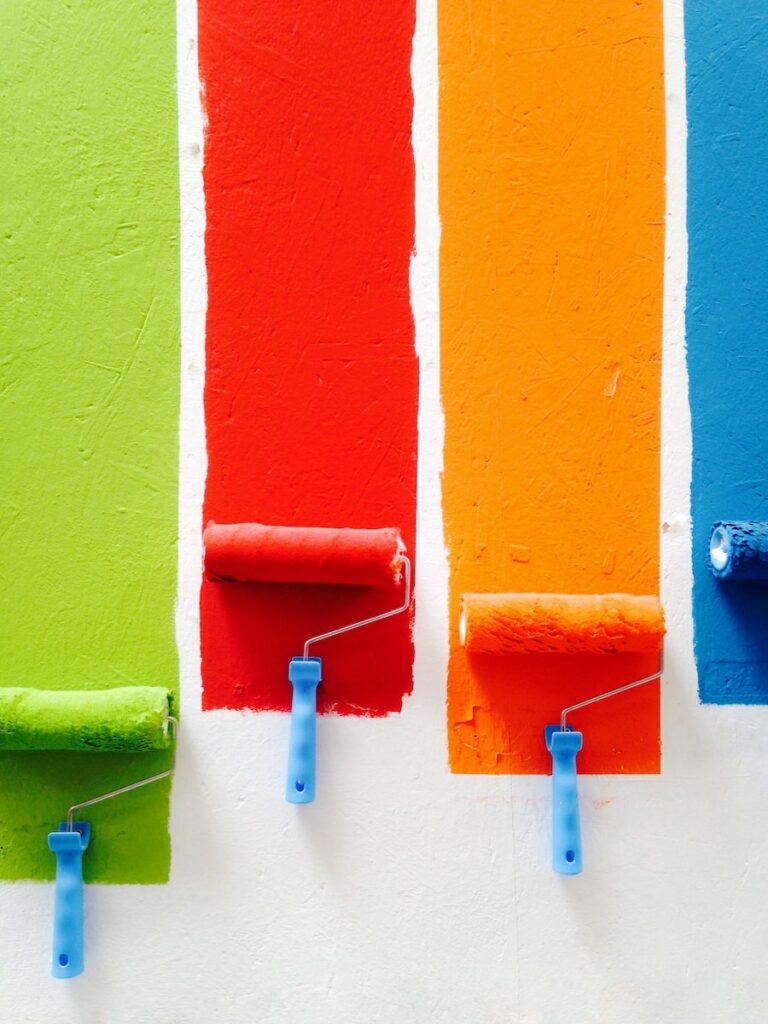The Colours on Brain: Painting a Positive Mindset to Nurture Mental Health

Your mind is like a blank canvas, and your thoughts are the palette of colours that paint the masterpiece of your every day life. When you choose shades of doubt and despair, your world may seem cloaked in shadows and darkness. When you allow the vibrant hues of positivity, hope, and joy, you can transform the landscape of your mind into a breath-taking view of possibilities. Embrace the artistry of your thoughts and remember that each stroke of your mental brush has the power to shape your world into a stunning tapestry of dreams and aspirations, illuminated by the radiant light of your positive mindset.
Choosing the colours for a healthy brain:
The world we perceive is an intricate tapestry of colors, each with the power to influence our emotions, thoughts, and overall mental health. By understanding the effects of colors on our brain, we can harness their potential to cultivate a positive mindset and foster well-being. In this article, we will delve into the science of color perception, explore the relationship between colors and the brain, and uncover practical ways to utilize the power of colors to support a positive mindset and mental health.
The science of colour perception and the brain
Our perception of color begins with light entering our eyes and being absorbed by specialized cells called photoreceptors, which convert this light into electrical signals. These signals then travel through the optic nerve to the visual cortex, where they are processed to create a rich and vibrant image of the world around us. The emotional and cognitive effects of color, however, extend beyond this initial visual processing.
When we perceive colors, our limbic system – a collection of brain structures responsible for processing emotions, memories, and motivation – is activated. This activation triggers the release of various neurotransmitters and hormones that influence our emotional state, stress levels, and even physical well-being. By understanding this relationship between colors and the brain, we can strategically use colors to support a positive mindset and mental health.
Cultivating a positive mindset with colours
The influence of colors on our mindset and emotions can be powerful, with different hues evoking specific emotional responses. To cultivate a positive mindset, consider incorporating the following colors into your daily life:
Blue: Known for its calming and soothing properties, blue can instil a sense of peace and tranquillity in the mind. By surrounding ourselves with blue hues, we can create a serene environment that fosters relaxation, focus, and mental clarity.
Green: Green is associated with nature, growth, and renewal, making it an ideal colour to promote a positive mindset. Exposure to green can help reduce stress, increase feelings of happiness, and encourage a sense of balance and harmony.
Yellow: The colour of sunshine and warmth, yellow is known for its uplifting and energizing effects. Incorporating yellow into our lives can boost our mood, stimulate creativity, and promote feelings of optimism and enthusiasm.

Applying colours to enhance mental health
In addition to cultivating a positive mindset, we can also use the power of colors to support our overall mental health. Here are some practical ways to utilize the influence of colors to enhance our well-being:
- Wardrobe: Mindfully choose what to wear in colours that evoke positive emotions, boost confidence, or soothe anxiety. Experiment with different color combinations to discover which hues best support your emotional needs.
- Living Spaces: Decorate your home and work environments with colors that foster relaxation, motivation, or creativity, depending on your needs. Consider using calming colors in your bedroom for a restful atmosphere, and vibrant colors in your office or creative space to stimulate productivity and innovation.
- Colour Therapy: Explore the benefits of colour therapy or chromotherapy, a holistic approach that uses the frequencies and vibrations of colours to promote emotional and mental well-being. This can include using coloured light bulbs, filters, or meditating with coloured crystals.
The power of colors to influence our mindset and mental health offers a unique and accessible tool for fostering well-being and resilience. By mindfully incorporating colors into our daily lives, we can create a vibrant and harmonious environment that supports our emotional and mental health. Embrace the colors of the mind, and let them paint a vivid and radiant picture of positivity, growth, and mental wellness.
The impact of color on our mental state goes beyond simple visual processing. Colors can trigger specific emotional responses and activate different areas of the brain. The limbic system, a collection of brain structures responsible for processing emotions, memory, and motivation, plays a key role in mediating the effects of color on our mood and behavior.
When we perceive a color, the limbic system is activated, leading to the release of various neurotransmitters and hormones that influence our emotions, stress levels, and even physical well-being. For instance, exposure to calming colors such as blue or green can promote the release of dopamine and serotonin, neurotransmitters associated with relaxation, pleasure, and a sense of well-being. Conversely, stimulating colors like red or yellow can trigger the release of adrenaline and cortisol, hormones associated with increased alertness, energy, and stress.
Colours, memory and learning
Colours can also influence our cognitive processes, such as memory and learning. Research has shown that the use of colour in educational materials can improve retention and recall, as well as enhance comprehension and creativity. In one study, participants exposed to blue or green color cues performed better on tasks requiring creative thinking, while those exposed to red cues performed better on tasks requiring attention to detail.
This suggests that different colours may facilitate different types of cognitive processes, and incorporating colour strategically in educational and work settings can enhance performance and productivity.
The impact of colour on the brain is multifaceted and complex, encompassing not only visual perception but also emotional processing, memory, and cognitive function. By understanding the ways in which colour interacts with our brain and influences our mental state, we can harness the power of colour to create environments that promote well-being, enhance learning, and boost mood and energy levels.
The perception of colour and its impacts on the human brain is a fascinating subject that delves into the realms of both physics and psychology. Each colour that we perceive is a result of a specific wavelength of light being reflected or emitted, and these wavelengths, with their respective frequencies, trigger certain responses in our brain.
The human eye is equipped with specialized cells called cones that detect the different wavelengths of light and transmit that information to the brain. The brain then translates these signals into the vibrant spectrum of colors that we experience.
Each colour, with its unique vibration, seems to have a distinct impact on our mood, thoughts, and overall state of being. These effects are the basis for the field of colour psychology, which examines how colours can influence our perceptions and behaviours.
Red: Known as a vibrant and intense colour, red has a frequency that has been associated with energy, passion, and urgency. It can stimulate people to make quick decisions and increase heart rate, which is why it’s often used in advertising to evoke a sense of urgency or during clearance sales.
Blue: This colour is often linked with calm and tranquillity. The vibration of blue light is believed to slow down human metabolism, thereby inducing a relaxing effect. This is one reason why many consider blue to be a suitable colour for bedrooms or relaxation spaces.
Green: As a colour that’s abundantly present in nature, green is often associated with peace, balance, and harmony. It can encourage a feeling of restfulness and tranquillity, helping to alleviate stress.
Yellow: This bright and cheerful colour is associated with happiness, creativity, and mental stimulation. It’s thought to encourage communication and stimulate the nervous system, promoting creativity and positivity.
Purple: Associated with luxury, power, and ambition, purple also has a calming effect on the mind and body. It is often related to spiritual awareness and mindfulness.
These associations, however, can also be influenced by personal experiences, cultural contexts, and individual preferences. It’s important to note that these responses are not universal, as color perception can vary greatly among different individuals and cultures.
In addition, it’s also worth mentioning that these impacts are not just psychological but could also be physical to some extent. For example, exposure to blue light, especially before sleep, can disrupt the body’s circadian rhythm, leading to poorer sleep quality.
The vibratory nature of colour and its interaction with our brain is indeed a captivating area of study, offering a unique intersection of physics, biology, and psychology.
Do you want to share your story and inspire our readers ? Know that every story is paving the way for a brighter, happier future.





